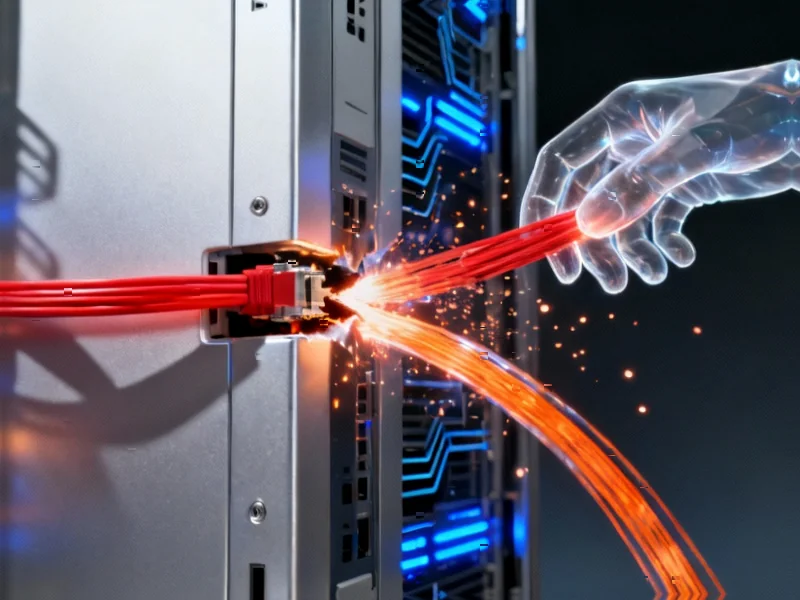The Real Bottleneck in Factory AI Isn’t What You Think
While most organizations worry about computing infrastructure, talent shortages, or algorithmic sophistication, the actual barrier to successful industrial AI implementation is far more fundamental. After observing hundreds of enterprise visual AI deployments across manufacturing sectors, a clear pattern emerges: the companies achieving meaningful ROI are those training their models on failure scenarios rather than ideal conditions.
Table of Contents
When Amazon scaled back its “Just Walk Out” technology from grocery stores, the surface-level explanations focused on customer confusion and technical limitations. But the deeper lesson for industrial applications is about edge case recognition and real-world variability – challenges that mirror exactly what manufacturers face when deploying computer vision in production environments.
Why Perfect Laboratory Conditions Create Imperfect Factory AI
Manufacturing facilities present some of the most challenging environments for visual AI systems. Unlike controlled lab settings, factories feature:, according to expert analysis
- Constantly changing lighting conditions from shift changes and seasonal variations
- Occlusions from equipment, personnel, and moving materials
- Visual noise from steam, dust, and reflective surfaces
- Infinite product variations and positioning scenarios
Companies that train their models exclusively on clean, well-lit product images often discover their AI systems fail when confronted with the messy reality of factory floors. The systems might perform flawlessly during validation testing but crumble when faced with a pallet slightly out of position, a worker’s hand partially obscuring a component, or lighting changes during night shifts.
The Success Pattern: Training on What Breaks Your System
High-performing manufacturing organizations approach AI training differently. Instead of optimizing for accuracy in ideal conditions, they deliberately seek out and document failure scenarios. This involves:, according to recent innovations
- Systematically collecting data from quality control failures and near-misses
- Creating comprehensive libraries of edge cases and anomaly scenarios
- Continuously testing models against real-world failure modes
- Implementing active learning systems that flag uncertain predictions for human review
One automotive manufacturer we observed succeeded where others failed by dedicating 40% of their training data to known failure scenarios – dents, scratches, misalignments, and assembly errors that their quality control team had documented over years. Their AI system became exceptionally robust because it learned from what actually went wrong in production, not just what looked right in perfect conditions.
Building Failure-Aware Data Collection Strategies
The most effective industrial AI implementations treat data collection as an ongoing process rather than a one-time project. They establish systems for:
- Continuous monitoring of model performance degradation
- Automated capture of low-confidence predictions
- Structured processes for labeling and incorporating new edge cases
- Cross-functional review between data science and operations teams
This approach creates a virtuous cycle where the AI system becomes increasingly adept at handling the complexities of real manufacturing environments. As the model encounters more edge cases and learns from them, its reliability improves, leading to greater trust from operations teams and more widespread deployment.
Practical Steps for Manufacturing Leaders
For companies embarking on visual AI initiatives, several strategies can help avoid the data trap:
- Start with your failure database – Historical quality control data is often the most valuable training resource
- Simulate real-world conditions – Introduce controlled variations and challenges during testing
- Implement continuous learning – Build feedback loops from production floor to data science teams
- Measure what matters – Track performance on edge cases, not just overall accuracy
The companies winning with industrial AI recognize that the technology’s value isn’t in performing perfectly under ideal conditions, but in handling imperfection reliably under real-world constraints. By focusing training efforts on what actually breaks systems rather than what makes them look good in demonstrations, manufacturers can build AI capabilities that deliver sustainable operational improvements., as as previously reported
As one plant manager told us after successfully deploying visual quality inspection: “We stopped trying to teach the AI what perfect looks like and started teaching it what expensive looks like. That’s when we started seeing real results.”
Related Articles You May Find Interesting
- UK Government Bets on AI to Slash Bureaucracy and Boost Public Sector Efficiency
- Rightcharge Secures €1.8 Million to Expand Fleet EV Charging Payment Platform Ac
- Corporate Leaders Outpace Workforce in AI Adoption, Creating Workplace Tensions
- Donut Lab’s Strategic Investment in Nordic Nano Signals New Era for Sustainable
- AWS’s AI Comeback Strategy: Why Being Late to the Game Could Pay Off Big
This article aggregates information from publicly available sources. All trademarks and copyrights belong to their respective owners.
Note: Featured image is for illustrative purposes only and does not represent any specific product, service, or entity mentioned in this article.



